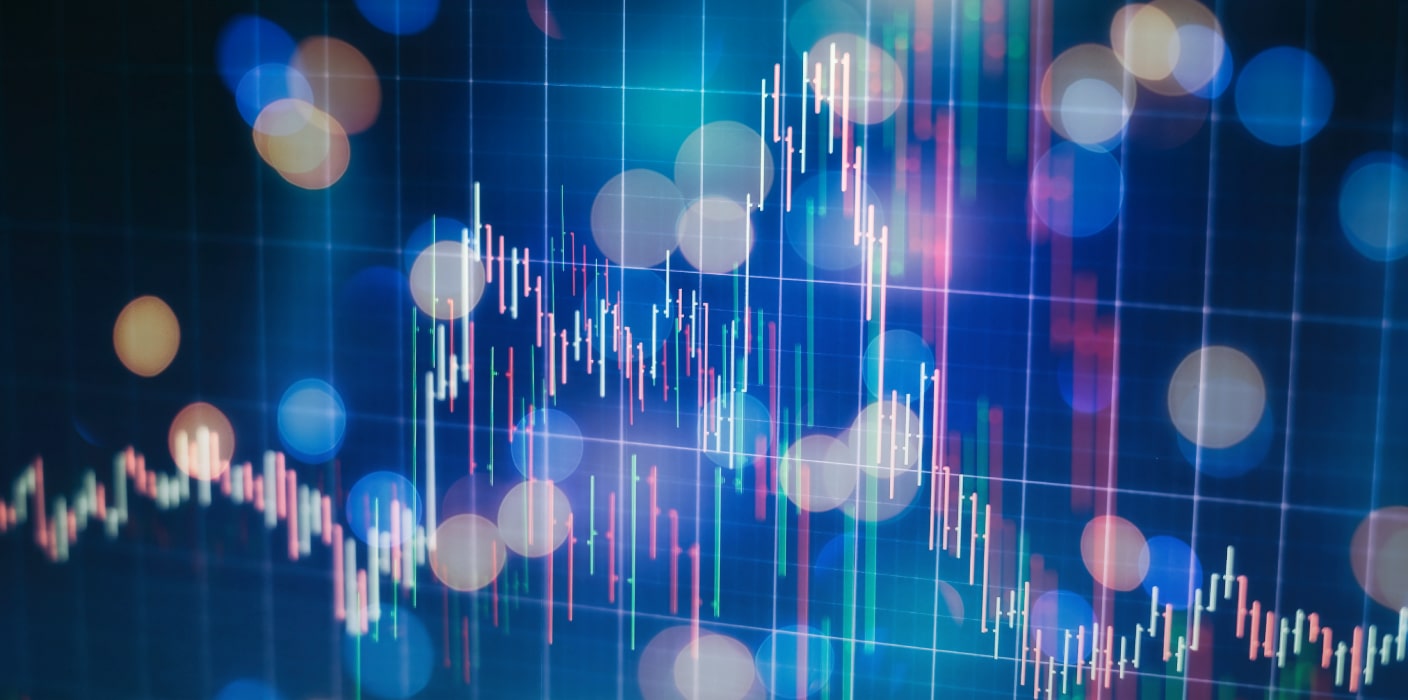Gain an overview of the latest developments on the currency market and anticipate fluctuation risks.
The era of the strong dollar
The Dollar Index – which measures the greenback’s performance against a basket of six currencies representing the United States’ main trading partners – has risen 7.3% since the beginning of the year. This upward movement has intensified in recent days. The Dollar Index is now above 103 – a level not seen since autumn 2002. This trend will not change any time soon. There are many risk factors underpinning the retreat back to the dollar: risk of recession in the UK, stagflation in Germany, geopolitical risk (Ukraine/Russia and China/Taiwan), soaring global inflation, zero-Covid policy in China, etc. A return of the Dollar Index to around the 110 mark is not out of the question. The last time this happened, in early 2002, it led to a return of volatility in the foreign exchange market and to major explosions in all currencies. We’re not quite at that point yet. But all indications are that the coming months will be economically complicated, and will lead to significant currency fluctuations. In other words, this is undoubtedly a good time to adapt and strengthen your currency risk strategy.
EUR/USD
High: 1.1171 Low: 1.0470 Change: -7.75%
Let’s not beat about the bush: we are witnessing a collapse of the euro against the US dollar. Foreign exchange market operators believe – probably rightly – that the euro zone will be hit harder than the United States in economic terms by the inflationary problem and the war in Ukraine. In recent weeks, there has been an increase in outflows from the euro area to the US market, which is considered safer. These capital flows are providing support to the US dollar in the long term. The FX market also believes that the process of monetary policy normalisation in the US will be faster and more significant than in the Eurozone. That is undoubtedly true. This is another factor that will support the US dollar. In the short term, all indications are that the euro’s decline will continue. The next target is 1.0341 (2017 low). If it falls below this level, it is clear that parity is within reach. In the longer term, the Chinese recovery could have a positive impact on the euro exchange rate. But it will certainly be several months before this is reflected in prices.
EUR/GBP
High: 0.8504 Low: 0.8246 Change: -1.31%
What has happened to the EUR/GBP pair in recent weeks is interesting. For several months, foreign exchange market operators had expected the euro to depreciate against the British currency in the medium term. This was due to expectations of monetary tightening in the UK which would have supported the GBP. However, the latest economic indicators are clear: the country is on the brink of recession (with soaring inflation eating away at British purchasing power). Under such circumstances, the Bank of England is likely to have to revise its rate hike schedule. A few weeks ago, the consensus was for a 50 basis point increase in the policy rate on 5 May. This now looks unlikely. The central bank is bound to opt for a hike of only 25 basis points (to 1%), to avoid pushing the UK economy into recession. In the short term, the decline in the pound could continue.
EUR/JPY
High: 140.01 Low: 134.04 Change: +0.89%
We are seeing a process of generalized weakening of the Japanese yen (also noticeable against the US dollar and the Australian dollar, for example). The monetary policy differential (the Bank of Japan remains accommodating, unlike all other central banks) largely explains the depreciation of the Japanese yen. There is little doubt that the Bank of Japan will keep its monetary policy unchanged for most of this year. As a result, we could have a fresh attempted attack on the 140.01 level for the EUR/JPY pair. This level acts as a multi-year resistance. Beware, however; we are not ruling out the possibility that the Japanese authorities may decide to intervene directly on the exchange rate in support of the yen. They are used to making such interventions. Simply put, this was usually done to combat the strength of the Japanese currency. Times are changing.
EUR/CHF
High: 1.0372 Low: 1.0087 Change: -0.51%
The Swiss National Bank has not brought out the big guns. But it has continued its direct foreign exchange interventions for about a month to prevent the EUR/CHF pair from reaching parity. This has been quite successful. We believe the central bank is quite comfortable with the pair fluctuating around 1.02-1.03 in the short term. It is therefore likely that there will be a sideways move in the EUR/CHF, as has been the case in recent weeks. Renewed risk aversion (e.g. linked to very poor economic indicators) could support the CHF. However, if the Swiss central bank decides to intervene, it still has plenty of ammunition. The first lesson about the foreign exchange market to always bear in mind: never fight a central bank. This generally ends badly.
EUR/CAD
High: 1.3960 Low: 1.3432 Change: -2.89%
Free fall. Compared to a month ago, there are no significant changes to be considered. The Canadian dollar exchange rate continues to be supported by the combination of a central bank in Canada that has clearly opted for a rate hike strategy, and continued high commodity prices. It should be noted that in recent days, commodity prices have fallen back slightly due to the drop in Chinese demand (40% of the Chinese economy is in lockdown). However, this is not expected to have a major impact on the EUR/CAD exchange rate. We are still bearish.
EUR/AUD
High: 1.4965 Low: 1.4319 Change: +0.55%
The EUR/AUD pair experienced some volatility following the Reserve Bank of Australia’s meeting earlier today following a decision to increase the cash rate target by 25 basis points to 35 basis point in an effort to fight inflation and the 4% unemployment rate. Latest figures on inflation and the 4% unemployment rate support this view. Expect further interest rate hikes in the near-term, perhaps a 25bp hike at each monetary policy meeting in the second quarter. The base rate is likely to be close to 2.25-2.50% in mid-2023. This should support the AUD against the EUR, in our view.
EUR/CNH
High: 7.1030 Low: 6.8700 Change: -0.15%
The Chinese authorities appear to be comfortable with a EUR/CNH exchange rate close to the 7.00 level in the short term. Some trading room analysts are talking about the possibility that China might decide to devalue its currency sharply to provide some support to its economy (almost 40% of the economy is in a more or less strict lockdown situation). At the moment, these are just rumours. Initially, Beijing seems to want to opt for the more traditional approach of stimulus measures. This risk must be borne in mind. But there is no reason to overreact at the moment.
EUR/HUF
High: 382.16 Low: 365.93 Change: +1.11%
As expected, the Hungarian central bank raised its policy rate at the end of April for the sixth time since the beginning of the year. The increase was 100 basis points to 5.40%. This was expected. Further short-term increases will be needed to combat inflationary pressures (the consumer price index is expected to be well above 9% year-on-year in April). The central bank expects inflation to return to the 2-4% range during the second half of next year. This is possible… but it will be difficult. For the time being, we are not altering our FX forecast for the EUR/HUF, which should stay at around 370 in the short term.
USD/HUF
High: 360.97 Low: 327.95 Change: +5.74%
The Hungarian central bank is considered credible in its fight against inflation (a rate hike of 100 basis points in April, and we expect it to do the same in May). However, it is not possible to fight a foreign exchange market dominated by the US dollar. We have undoubtedly entered a sustained cycle of a rising greenback that will penalise all emerging currencies, including the HUF. We will have to get used to this new reality. For USD/HUF, this means that we could quickly see a return to its recent highs, at 368.34 in particular.
| DATE | CURRENCY | EVENT |
| 03/05 | AUD | Central bank monetary policy meeting |
| 04/05 | USD | Central bank monetary policy meeting |
| 05/05 | GBP | Central bank monetary policy meeting |
| 06/05 | USD | US Dept of Labor employment report (April) |
| 11/05 | USD | Consumer Price Index in April |
| 13/04 | USD | US Producer Price Index for March (first estimate) |
| 12/05 | USD | US Production Price Index for April |
| 18/04 | CNH |
Q1 GDP for China |
| 24/04 | EUR | Second round of the presidential election in France |
| 26/04 | HUF | Central bank monetary policy meeting |
Topics






